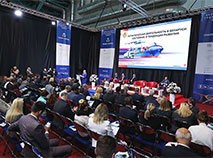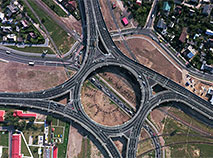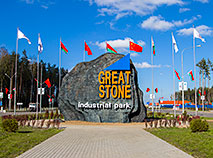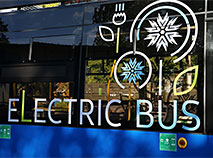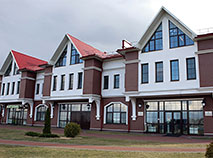The business environment in Belarus
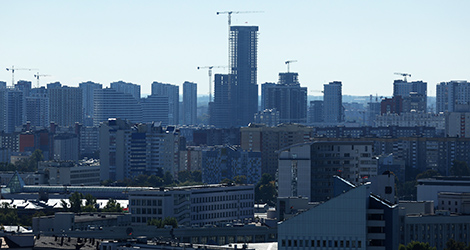
An overview of business environment in Belarus: main industries, free economic zones, communications and transport infrastructure, science and engineering
Main industries in Belarus
Belarus has a well-developed industrial sector, which accounts for around 25.0% of the country’s GDP (2024). Some of its main industries are:
-
tractors and agricultural equipment (Belarusian tractors are well regarded throughout the region)
-
automotive industry (including dump trucks and earth movers)
-
electrical equipment and household appliances
-
radio electronics
-
chemicals
-
textiles
-
timber
Free economic zones in Belarus
Each region of Belarus has a free economic zone.
-
Brest (1996)
-
Gomel-Raton (1998)
-
(1998)
-
Vitebsk (1999)
-
Mogilev (2002)
-
Grodnoinvest (2002)
Businesses operating in these zones enjoy a range of benefits including:
-
exemption from income tax derived from the sale of goods or services in foreign markets or to other FEZ resident companies;
-
exemption from real estate tax: *within three years from the date of registration in the FEZ on buildings and structures that are built (acquired) during this period; * on buildings and structures located in the FEZ regardless of the area of their use (provided products are exported and (or) sold to other residents of the Belarusian FEZ);
-
exemption from payment of land tax and land lease fees: * for the period of design and construction of facilities, but not more than five years from the date of registration as a resident of the FEZ; * regardless of the area of their use (provided products are exported and (or) sold to other residents of the Belarusian FEZ);
-
No fee for issuing special work permits to allow foreign nationals and stateless persons to work in the territory of Belarus if they are involved in running an investment project in the FEZ.
-
Financing of expenses on new engineering and transport infrastructure required for the implementation of an investment project by a FEZ resident company, mostly from the funds of the State Investment Program and local budgets, with the priority being given to an investment project with a declared investment amount exceeding €10 million.
Belarus set up a special economic zone – the China-Belarus industrial park Great Stone. It features industrial and logistics zones, residential and office buildings, financial and R&D centers. In accordance with the presidential decree, the industrial park enjoys tax and customs privileges, other preferences and favorable conditions for doing business.
Communications infrastructure in Belarus
The national telecom operator in Belarus is Beltelecom. It provides voice and data services, hosting, and is responsible for the maintenance of main lines. The company's portfolio includes the brands byfly (high-speed Internet access), ZALA (interactive, over-the-air and internet television), YASNA (bundled services), and YASNAye TV (24-hour Full HD broadcast).
Telephone network: the phone system in Belarus is run by the country’s leading telecommunication company Beltelecom. At present, the company is completing the process of switching its subscribers to the IMS platform – a modern system that provides traditional access to local, long-distance and international telephony services and offers new services. The number of telephones connected to the public network exceeds 3.7 million (2024). If it is impossible to connect to the IMS network, wireless WLL and LTE networks are used.
Belarus has a well-developed cellular network. There are three telecommunication service providers: MTS, A1, life:). The second and third generation cellular communications cover 99.3% and 98.6% of the country's territory respectively, where 99.9% of the population lives (2024). The number of cellular mobile telecommunications subscribers is over 11.7 million.
The fourth-generation cellular communication network based on the LTE standard has been developing in Belarus since December 2015. Currently, LTE cellular mobile telecommunication services are available to 99.0% of the population in Belarus, with territory coverage of 93.0% (2024).
Internet: The throughput capacity of the telecom links that connect Belarus with the rest of the world is 3,760Gbps (2024). The number of Internet users in the country is over 11.4 million (2024).
The number of Belarusian websites has increased significantly in recent years. In 2015, work began on the development of the Cyrillic domain zone.бел.
Belarus ranked 22nd in ICT access among 132 countries according to the Global Innovation Index 2023.
According to the ICT Development Index (IDI) 2024 published by the International Telecommunication Union, Belarus improved its position in seven out of nine indicators, with two indicators – fixed-broadband internet basket price (as % of GNI per capita) and individuals who own a mobile phone (%) – receiving the maximum value (100%). Belarus' IDI increased from 86.9 in 2023 to 88.5 in 2024, indicating notable progress in the development of information and communication technologies.
Transport links in Belarus
The country has a geographically strategic position in the center of Europe, between the European Union and the Eurasian Economic Union. Belarus has very good road and rail networks.
The public transport system is excellent, with frequent, punctual rail and bus services throughout the country. Minsk metro is the country’s first underground rail network.
Importance of science and technology
With high levels of education in Belarus the Government is busy with promoting the development of science and technology in the country.
In 2005 the Belarus president opened the Hi-Tech Park in Minsk, which resident companies can enjoy tax concessions and special opportunities to develop business in IT and related areas.
The Hi-Tech Park is located on the territory of 50ha of the Belarusian capital. The city’s high-tech idea unites a number of zones:
-
a scientific and production zone (buildings for IT companies),
-
a residential zone (houses for specialists, a school and a kindergarten),
-
a business and educational zone (a business center, offices of IT companies, a dormitory for the students of the IT Academy, a hotel),
-
a public and sport zone.
Unlike many similar parks in Europe and Asia, the Belarusian Hi-Tech Park is virtual. This means that for its resident companies the legal regime is valid across the country, regardless of the location of the office.
The Hi-Tech Park currently more than 1,000 resident companies (2025).
The companies are engaged in:
-
software development;
-
development and assimilation of software solutions;
-
IT outsourcing, IT services;
-
outsourcing of business processes and other things.
The Hi-Tech Park’s resident companies focus on two areas:
-
custom-made software development to address unique challenges of any enterprise,
-
development of ready-to-use software.
Proprietary software of the HTP resident developers cater to companies (B2B) and household consumers (B2B).
For B2B market the HTP develops ERP systems, integrated banking systems, software for the complex automation of banks, cloud business platforms, etc.
For B2C market the HTP designs mobile applications for Android, iOS, computer games, and other products.
The HTP’s clients are companies from 67 countries all over the world.
The HTP operates an HTP education center, the Belarusian-Indian education center, which trains personnel for the IT-industry.
Belarus is also working on the project to set up a technological cluster Belbiograd that will specialize in nano and biotechnologies and pharmaceutics.
Belarus market statistics
| GDP: | Br246.6 billion (2024) |
| GDP per capita: | Br27,001 (2024) |


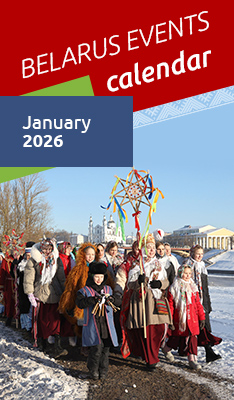




 print version
print version make home page
make home page add to bookmarks
add to bookmarks